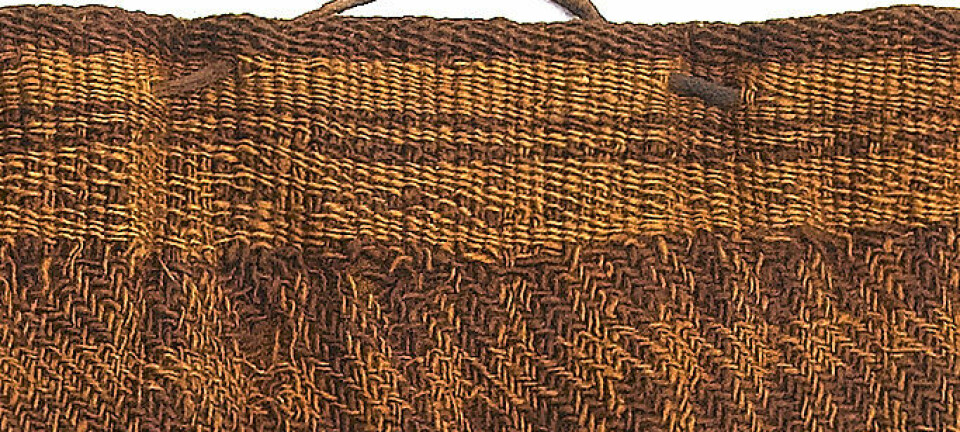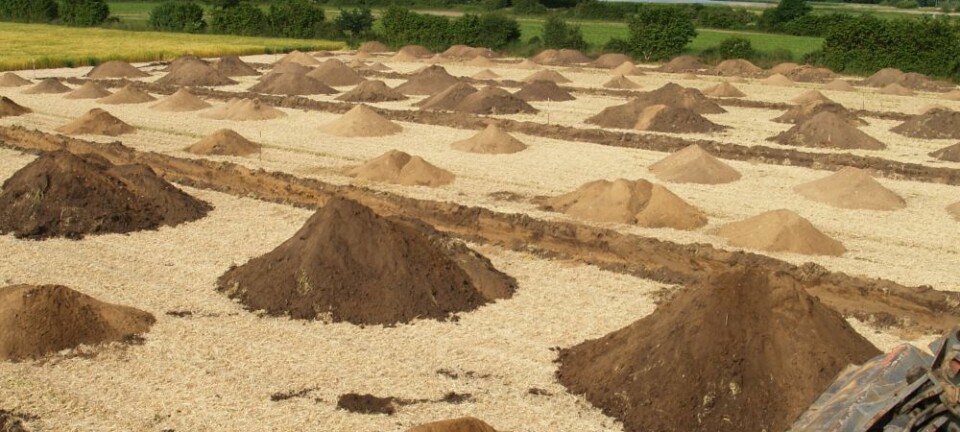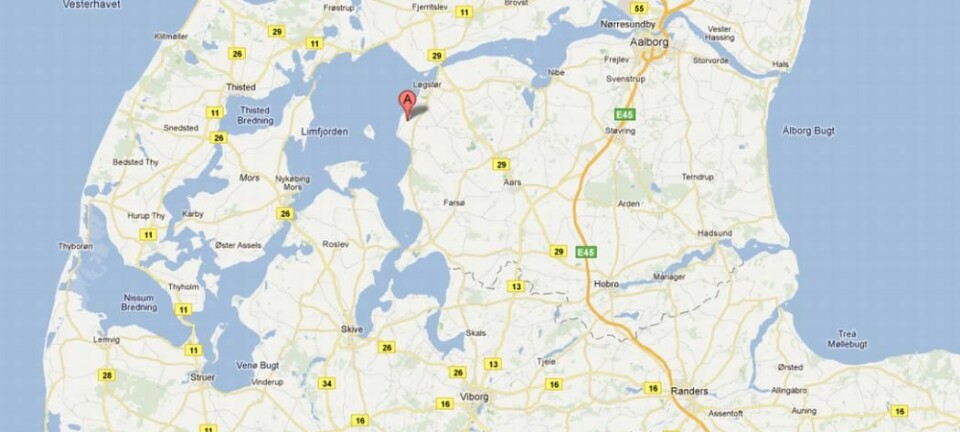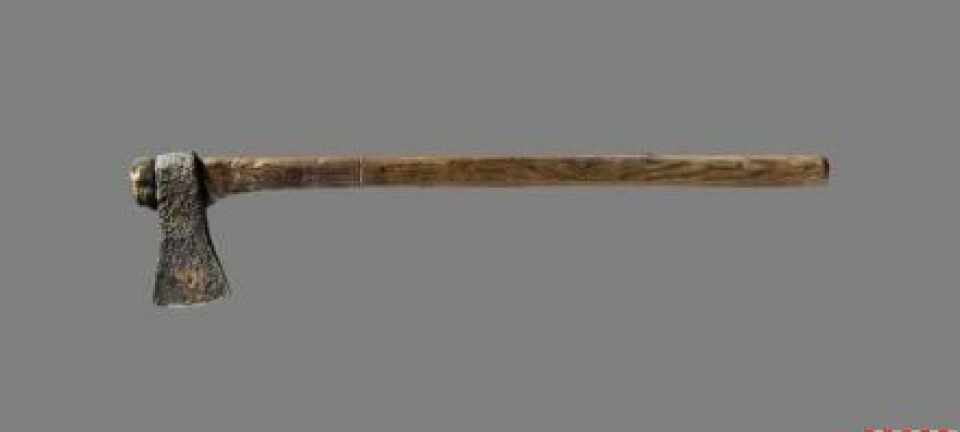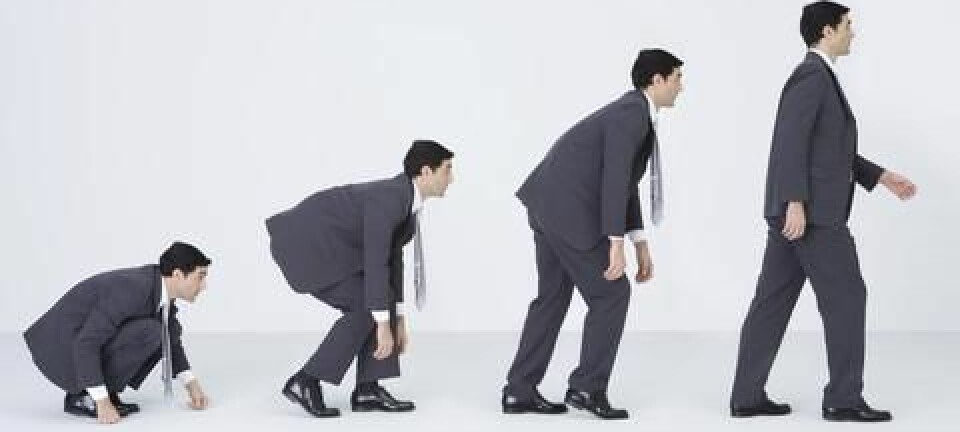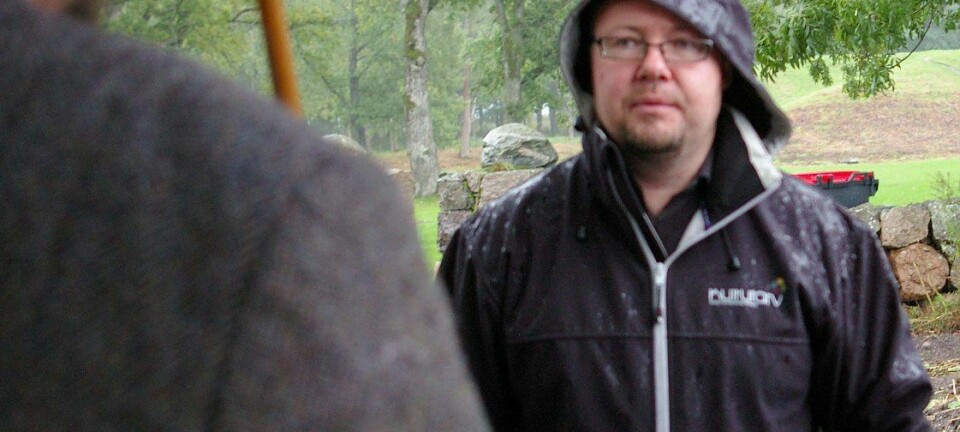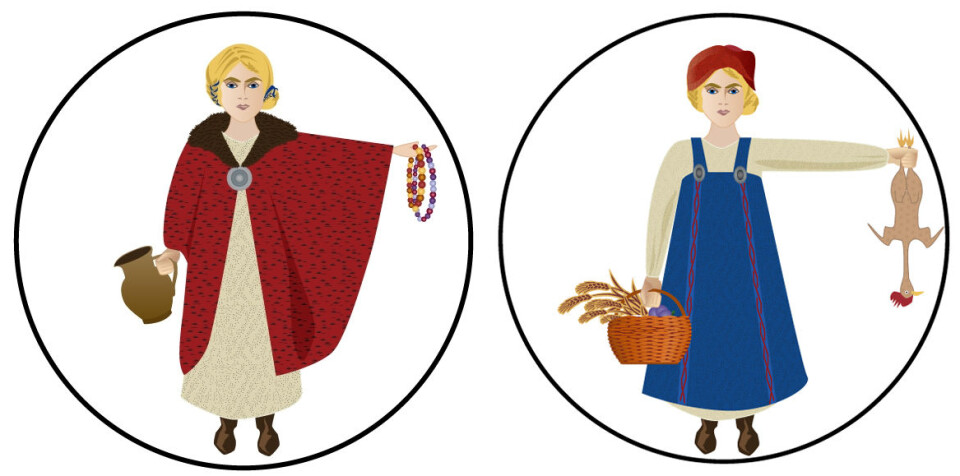
What Vikings really looked like
Were Vikings really dirty savages who wore horned helmets, or did they look like we do today? Here’s what the experts say.
There’s no shortage of myths about the appearance of our notorious Viking ancestors.
To find out more about these myths, ScienceNordic’s Danish partner site, videnskab.dk, asked its Facebook readers to list their favourite myths about what the Vikings looked like.
We have picked out five myths from the resulting debate and asked researchers to help us confirm or bust these myths.
Armed with this information, our graphic designer then took a shot at drawing some examples of our infamous forefathers, which you can see in our picture gallery.
The five myths are:
- Vikings were dirty and unkempt
- Vikings wore horned helmets
- Vikings looked like we do today
- Vikings’ clothing style was admired throughout the world
- Vikings’ appearance was marked by battle wounds
MYTH 1: Vikings were dirty and unkempt
Unwashed, rough warriors with froth hanging out of the corners of the mouth. Popular culture portrays the Viking as a somewhat filthy person.
But that’s unlikely to be true:
“Several archaeological finds have revealed tweezers, combs, nail cleaners, ear cleaners and toothpicks from the Viking Age," says Louise Kæmpe Henriksen, a curator at the Viking Ship Museum in Roskilde.
The finds suggest that cleanliness meant a lot to the Vikings. Written sources from medieval England also back up this view. In his chronicle from 1220 – a couple of centuries after the Vikings had ravaged England – John of Wallingford described the Vikings as well-groomed heartbreakers:
”They had also conquered, or planned to conquer, all the country’s best cities and caused many hardships for the country’s original citizens, for they were – according to their country’s customs – in the habit of combing their hair every day, to bathe every Saturday, to change their clothes frequently and to draw attention to themselves by means of many such frivolous whims. In this way, they sieged the married women’s virtue and persuaded the daughters of even noble men to become their mistresses,” wrote Wallingford.
There are, however, sources that paint a contrasting picture:
“The Arab ambassador IBN Fadlan, who met a group of Vikings on the Volga, described them as the filthiest of Allah’s creatures,” says Henriksen.
“But the Arabs were Muslims and came from a culture where people were supposed to bathe before each of their five daily prayers, whereas the Vikings may only have bathed once a week.”
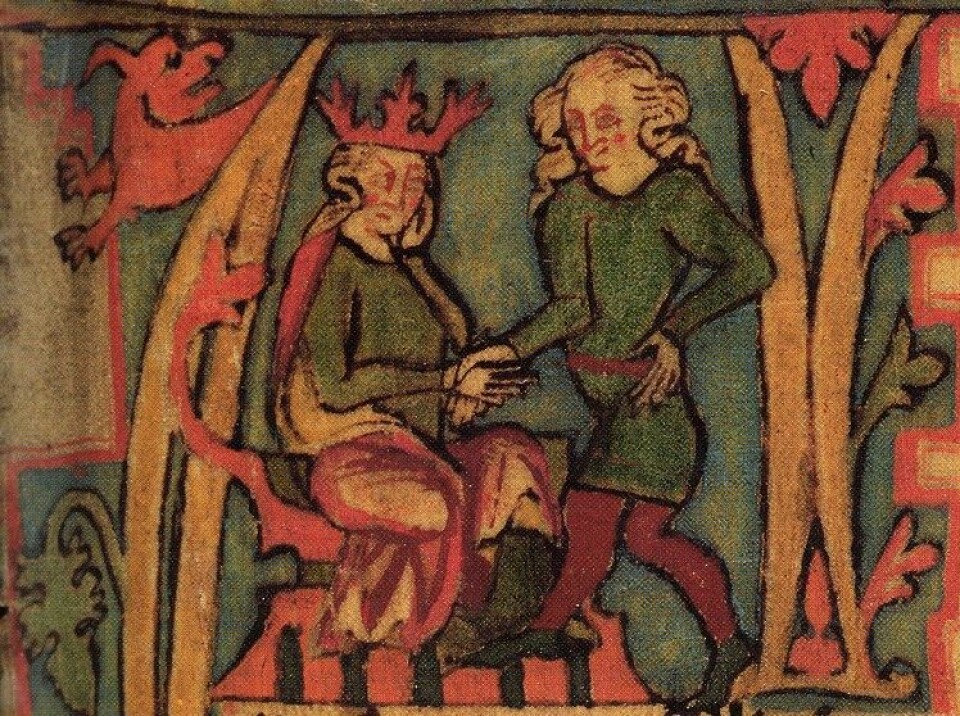
Vikings with neat beards and reverse mullets
It wasn’t enough just to be clean. The hair also had to be styled right.
“From picture sources we know that the Vikings had well-groomed beards and hair. The men had long fringes and short hair on the back of the head," she says, adding that the beard could be short or long, but it was always well-groomed. Further down on the neck, the skin was shaved.
Two sources support this view:
One is a three-dimensional carved male head on a wagon in the Oseberg ship burial mound in Norway. The man’s hair is well groomed and he has an elegant long moustache and a chin beard that reaches up to his moustache, but apparently not out to the cheeks.
The second source is an anonymous Old English letter in which a man admonishes his brother to follow the Anglo-Saxon practice and not give in to ‘Danish fashion with a shaved neck and blinded eyes’. Blinded eyes probably meant a long fringe.
The women’s hair was usually long. It was probably tied into a knot on the back of the head, and the knot may have been decorated with coloured tape, which was braided into the hair. The women also wore a bonnet or a scarf around their heads.

MYTH 2: Vikings wore horned helmets
When you see a Viking in cartoons, games or in movies, he’s often depicted with a horned helmet on his head. But real Vikings did not wear these horned helmets.
It wasn’t until the end of the 19th century that people started drawing Vikings wearing horned helmets because the villains in a popular Wagner opera wore such helmets.
In a real combat situation the horns wouldn’t be very practical as they could easily get entangled in anything that came their way.
When in combat, real Vikings used iron helmets for protection, and they were armed either with ordinary tools or actual weapons such as swords and lances.
Weapons reveal Vikings’ wealth
Researchers can make estimates about a Viking’s social standing based on the weapons he brought to his grave. Small axes and knives were tools for everyone, but only the elite could afford lances and swords.
"You needed to have a high ranking in society to be buried with a sword,” says Viking weapon expert Peter Pentz, a curator at the Danish National Museum.
“A more ordinary Viking could be buried with his axe or knife, but we cannot say whether the axe and the knife had been used as weapons or as tools. Grave finds have revealed numerous small axes, which might just as well have been used for felling trees as for killing.”
The small axe was a tool that could be carried in a belt just like a knife, but the sword is unlikely to have served any other purpose than to kill.
“The sword was associated with an entirely different prestige. In grave finds that’s a clear indication that we’re dealing with a warrior,” says Pentz.
The Vikings also used bows, arrows and sharp spears as weapons. For protection they used a round shield, which was lined with leather. These shields were sometimes painted and decorated with simple patterns.
Those who could afford it also used a chain mail to protect the torso.
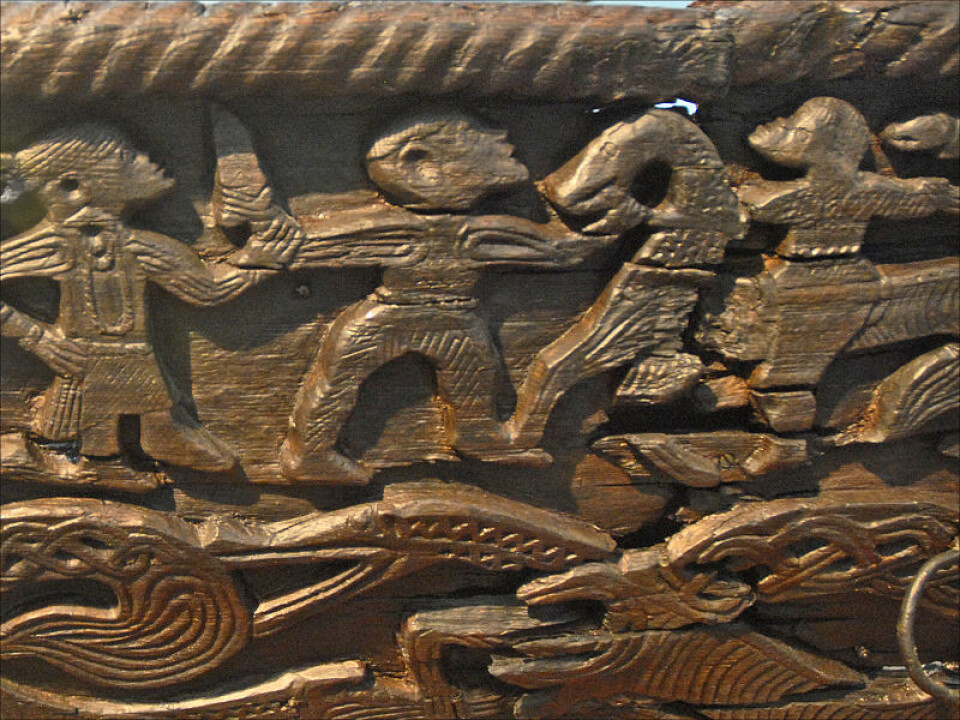
MYTH 3: Vikings looked like we do today
Many of videnskab.dk’s Facebook readers said they imagine that Vikings looked more or less exactly like we do today.
This is true to a certain extent, but there are some subtle differences and a small mystery that is yet to be solved.
The Vikings’ anatomy was very similar to ours, except that the ancient Danes were 8-10 cm shorter, on average, than we are today.
Louise Kæmpe Henriksen believes that Viking bodies were generally marked by the hard work they had to put in every day as peasants.
“It’s probably fair to assume that they have been more muscular than we tend to be today, but their appearance was also marked by their hard work. Osteoarthritis was, together with dental problems, a common complaint,” she says.
The Vikings had access to a variety of foods from around the world because they had travelled far and wide as tradesmen and as warriors.
Nevertheless, their nutrition was generally poorer than today. The children experienced slower growth and didn’t grow to be as tall as children do today, explains anthropological archaeologist Lise Lock Harvig of the Department of Forensic Medicine at the University of Copenhagen, who studies skeletons from ancient tombs.
Viking women had masculine faces
The skeletons reveal another difference between us and the Vikings: men’s and women’s faces were more similar in appearance in the Viking Age than they are today.
“It’s actually more difficult to determine the gender of a skeleton from the Viking era,” says Harvig. “The men’s skulls were a little more feminine and the women’s skulls a little more masculine than what we’re seeing today. Of course, this doesn’t apply to all skeletons from the Viking period, but generally it’s quite difficult to determine the gender of a Viking Age skeleton.”
She explains that Viking women often had pronounced jawbones and eyebrows, whereas in the men, these features were more feminine than what archaeologists are accustomed to when trying to determine the gender of ancient skeletons.
Danish Vikings were redheads
The skin on the skeletons has looked much like it does on most of today’s Danes. Genetic studies have shown that even back then there was a healthy mix of blonds, redheads and dark-haired people, just like today.
There were, however, more blond Vikings in northern Scandinavia in the area around Stockholm, Sweden, while there were more redheads in western Scandinavia, which Denmark belongs to.
But not everyone in Viking society was of Scandinavian descent:
”There was a mixture even back then because other cultures came to Denmark,” says Harvig.
Dubgaill vs finngaill
Louise Kæmpe Henriksen mentions a little mystery that has popped into the discussion about the appearance of the Vikings.
In the Irish annals, Danish and Norwegian Vikings are described as ‘dark-skinned’ and ‘beautiful blondes’ respectively – the contemporary Irish ‘dubgaill’ and ‘finngaill’.
According to Peter Pentz of the Danish National Museum, there is an ongoing debate within scientific circles about the exact meaning of these words.
Historians have traditionally interpreted the dark and fair Vikings as Danes and Norwegians, respectively. But this interpretation has recently been challenged by researchers David N. Dumville and Clare Downham. They argue that neither of the two terms describes Viking ancestry. ‘Finnegaill’ could have been used to describe those Vikings who had been in Ireland over long periods, while ‘dubgaill’ was used for newly-arrived rival groups of Vikings.
MYTH 4: Vikings’ clothing style was admired throughout the world
Some of videnskab.dk’s Facebook readers believe that the Vikings’ clothing style was admired throughout the world.
And sure enough, several sources, including an old drawing, give positive descriptions of their clothing.
”The Anglo-English king Cnut the Great is portrayed on an English drawing from the 1030s as an erect, well-groomed and elegantly dressed man with pointy shoes, socks with ribbons, trousers and a knee-length tunic and a cloak slung over one shoulder,” says Henriksen.
Scientists know that Vikings valued colours and patterns and that fashion changed over time, from region to region. But exactly what the Viking outfits looked like remains a mystery.
What we know is based on fragments of clothes
Most of the Vikings' clothes have rotted away and disappeared by the time archaeologists excavate their tombs, says Ulla Mannering, an archaeologist at the Danish National Research Foundation's Centre for Textile Research at the National Museum.
"The picture we have is quite fragmented because it’s based on objects and textiles that are preserved in the tombs,” she says. “In some cases it can be quite difficult to reconstruct the clothes. Besides, it’s not certain that the clothes they wore when they were buried were the same as they would wear any other day."
Researchers do know for sure though that there was a difference between men’s and women’s costumes.
Women’s clothing
The women usually wore long dresses or skirts which went down to the feet. Archaeologists have found numerous belt buckles in women's graves, located on the skeleton’s shoulders. This indicates that the women wore so-called harness dresses, which were held together with a strap over each shoulder. Other findings show that women also wore dresses with built-in sleeves.
The clothes were double-layered. On the inside, Viking women wore a linen base – a sort of petticoat, which was soft and had a cooling effect. The outer clothes were usually made from wool, which is a warm, but also a durable material.
Men’s clothing
The men wore the same materials as the women. The inner layer usually consisted of a linen kirtle – a long shirt which the men pulled over their heads. On the outside, the typical Viking man wore a woollen coat.
Like today’s men, Viking men wore trousers. These could be either short or long, and they were usually sewn in the style of pantaloons. These trousers only reached down to the men’s knees.
Men usually wore a hat whereas women could choose between a small hat and a scarf.
Vikings knew of colours and luxury
Scientists know that the Vikings liked colours.
"Blue and red were popular colours throughout the Viking Age. In general, they all wore colourful clothes with patterns and sewn-on ribbons," says Mannering, adding that archaeologists have come across examples of colours covering the entire colour palette.
The Vikings have also known about luxuries such as silk and sewn-on ribbons with silver and golden threads. But only a few members of the elite have been able to wear these exclusive fabrics, which were imported from around the world.
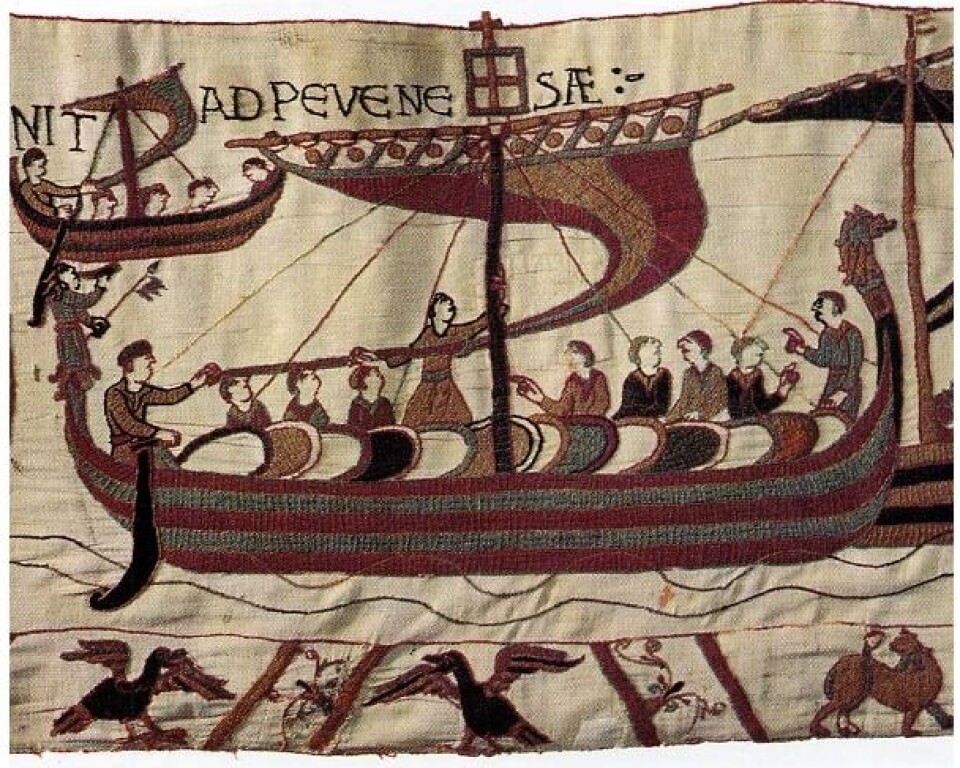
MYTH 5: Vikings’ appearance was marked by battle wounds
The muscular Vikings sometimes worked as farmers, and other times they were in battle.
The scientists cannot say, however, how much of the Vikings’ physical appearance has been characterised by wounds and lesions from fights, since superficial cuts or a missing eye cannot be detected on an ancient skeleton.
“But in male skeletons, we have found examples of sword wounds in the hip, which the man has survived,” says Harvig. “It’s not as if all of them have lesions, but it’s not uncommon either.”
She says it’s likely that the Vikings walked around with ugly scars. They didn’t have the modern methods of treating wounds and injuries that we have today.
So perhaps the image of an average Viking, as portrayed in the above picture gallery, only needs to be spiced up with a scar or two and that should bring us pretty close to a portrayal of what Vikings really looked like.
———————————————————-
Read this article in Danish at videnskab.dk
Translated by: Dann Vinther
